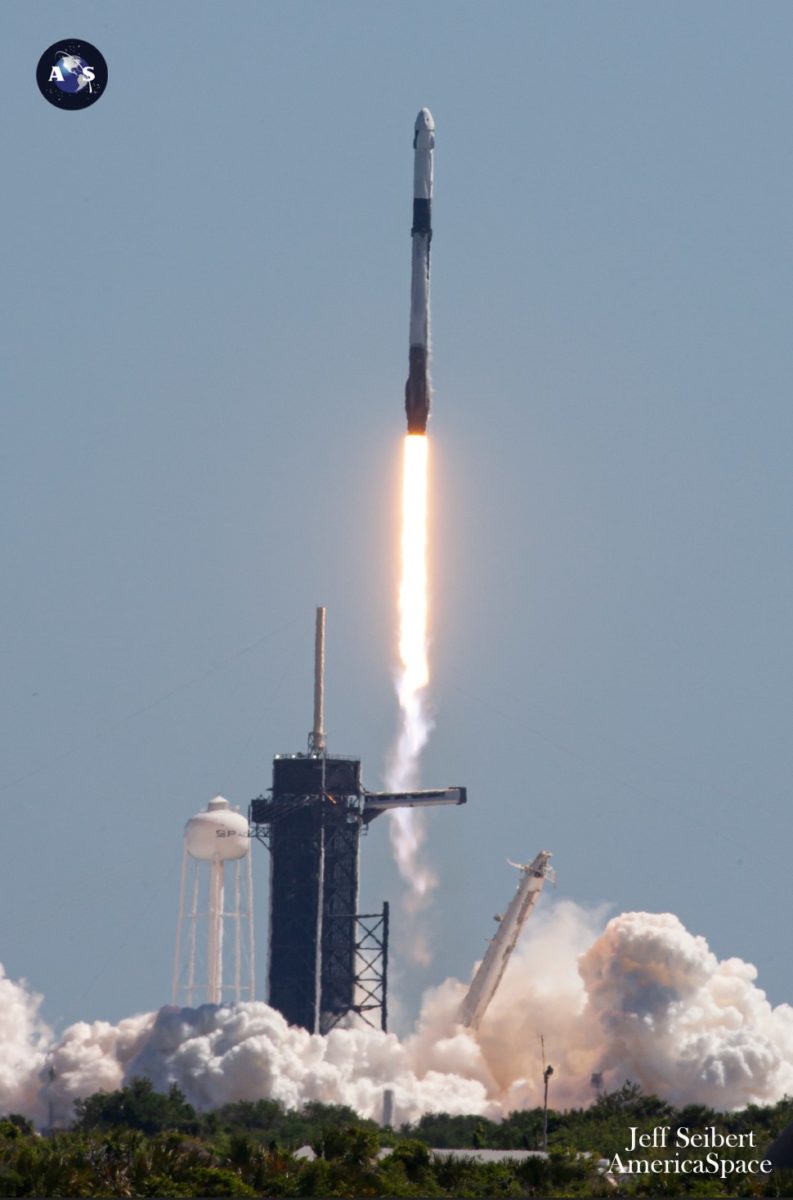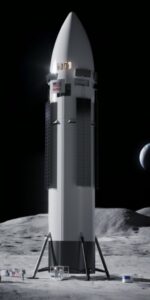
SpaceX drew inexorably closer to its vaunted goal of a hundred-mission 2023 last night, as a 17-times-used Falcon 9 roared uphill at 11:20 p.m. EST Monday, kicking off the ninth flight of November and the 50th outing—in the year’s 48th week—from storied Space Launch Complex (SLC)-40 at Cape Canaveral Space Force Station, Fla. Seasoned veteran B1062 sprang from SLC-40 under near-perfect Space Coast weather conditions, laden with a “stack” of 23 Starlink internet communications satellites, destined for low-Earth orbit.

Approximately 65 minutes later, the Starlink payload, which totaled around 40,600 pounds (18,400 kilograms), was successfully deployed, marking the 57th flight of these flat-packed satellites so far this year. All told, including last night’s mission, over 1,800 Starlinks have been launched since January, adding to a grand total of more than 5,000 deposited into low-Earth orbit since May of 2019.
As a network, Starlink facilitates high-speed and low-latency internet provision to over 60 sovereign nations and international markets in North and South America, Europe, Asia, Oceania and Africa. Earlier in November, Europe’s Georgia, Africa’s Benin and Asia’s Maldives have joined the network.

The downsized Starlink “V2 Mini” satellites, first flown last February, boast three to four times greater “usable” bandwidth than earlier Starlink iterations. “V2 Minis include key technologies—such as more powerful phased-array antennas and the use of E-Band for backhaul—which will allow Starlink to provide 4x more capacity per satellite than earlier iterations,” SpaceX explained. “Among other enhancements, V2 Minis are equipped with new argon Hall thrusters for on-orbit maneuvering.”
Florida-based intercity operator Brightline adopted Starlink on its trains earlier in 2023, the first passenger rail service in the world to do so. Additionally, El Salvador’s Ministry of Education has begun integrating Starlink capability into its schools to help close the digital divide between urban and remote rural communities and 50 Rwandan schools are now connected via Starlink’s high-speed internet service.

In readiness for last night’s launch, the Autonomous Spaceport Drone Ship (ASDS), “Just Read the Instructions”, departed Port Canaveral last Saturday evening, bound for a recovery location some 390 miles (630 kilometers) offshore in the Atlantic Ocean. Late Monday, SpaceX announced its intent to aim for a suite of T-0 points, opening at 11:20 p.m. EST and closing at 2:58 a.m. EST Tuesday.
Weather conditions were expected to be highly favorable, with around a 90-percent probability of “Go”, despite a slight risk of showers induced by a cold front approaching Central Florida on Monday. “Behind the front, cooler and drier air will begin to filter in from the northwest,” noted the 45th Weather Squadron at Patrick Space Force Base in its L-1 update, issued Monday.

“Although the surface front and any significant weather will be well to our south, the position of the subtropical jet stream will promote a cirrostratus deck in the upper levels that begins to stream in overnight,” it added. “Models are indicating that these upper-level clouds will likely increase in coverage and thickness as the window progresses”, potentially triggering concerns of a Thick Cloud Layers Rule violation.
Such fears proved moot as B1062 rose into the darkness right on the opening of the launch window at 11:20 p.m. EST to begin her 17th mission and catapulting her into joint-second place with sister B1060 on SpaceX’s Grizzled Veterans List and only one flight behind fleet-leader B1058—the one-time ride of “Bob and Doug”—which logged a record-setting 18th launch earlier this month. She powered smoothly uphill under the impulse of her nine Merlin 1D+ engines, before separating and descending to a smooth touchdown on JRTI’s deck.

Although initially certified for a maximum of 15 launches, lengthy deep-dive engineering inspections of B1058 and B1060 after both boosters reached this limit in late 2022 and early this year apparently yielded no major showstoppers to preclude a life extension to 20 missions. But whilst B1058 and B1060 remained ground-bound over six months following their 15th flights, B1062 enjoyed a more routine 81-day processing flow between her own 15th flight in late July and her 16th in October.
And the passage of under six weeks—a mere 41 days—between her 16th and 17th launches adds to a growing sense of confidence within SpaceX that individual boosters may not only reach but surpass the new 20-mission limit.

B1062 entered service in November 2020, when she lifted the fourth Block III Global Positioning System (GPS III-04) satellite for the U.S. Space Force, followed by GPS III-05 the following June. In 2022, she logged eight missions, the highest number of launches ever attained by a single booster in a single calendar year, notably flying twice in April 2022 alone, setting a new empirical (and still unbroken) record of only 21 days between flights by the same orbital-class booster.
She also stands as one of only a handful of Falcon 9s to have launched two crews of astronauts. B1062 flew the historic, all-civilian Inspiration4 crew of Shift4Payments billionaire Jared “Rook” Isaacman and crewmates Sian Proctor, Hayley Arceneaux and Chris Sembroski aboard Dragon Resilience in September 2021 and Ax-1 crewmen Mike Lopez-Alegria, Larry Connor, Mark Pathy and Eytan Stibbe on the first leg of their 17-day mission to the ISS for Houston, Texas-based AxiomSpace, Inc., in April of last year.

Added to that impressive list, she has now launched 438 Starlinks on ten dedicated missions, together with 40 broadband satellites for London, England-based OneWeb and a pair of geostationary-bound payloads, one for Egypt in June 2022 and another for Saudi Arabia last May.
Last night’s mission brings to nine the total number of Falcon 9s flown so far in November, an ongoing personal best for the Hawthorne, Calif.-headquartered launch services organization which has scored back-to-back nine-flight months since August.






4 Comments
Leave a Reply4 Pings & Trackbacks
Pingback:Farewell to the “Old Guard”: Bob & Doug’s Booster Lost at Sea - AmericaSpace
Pingback:Farewell to the “Old Guard”: Bob & Doug’s Booster Lost at Sea - SPACERFIT
Pingback:SpaceX Launches Third Mission in 2024’s First Week, ULA Vulcan-Centaur to Fly Tonight - AmericaSpace
Pingback:After Weather Delays, Life-Leading Falcon 9 Continues Rapid Vandenberg Launch Cadence - SPACERFIT